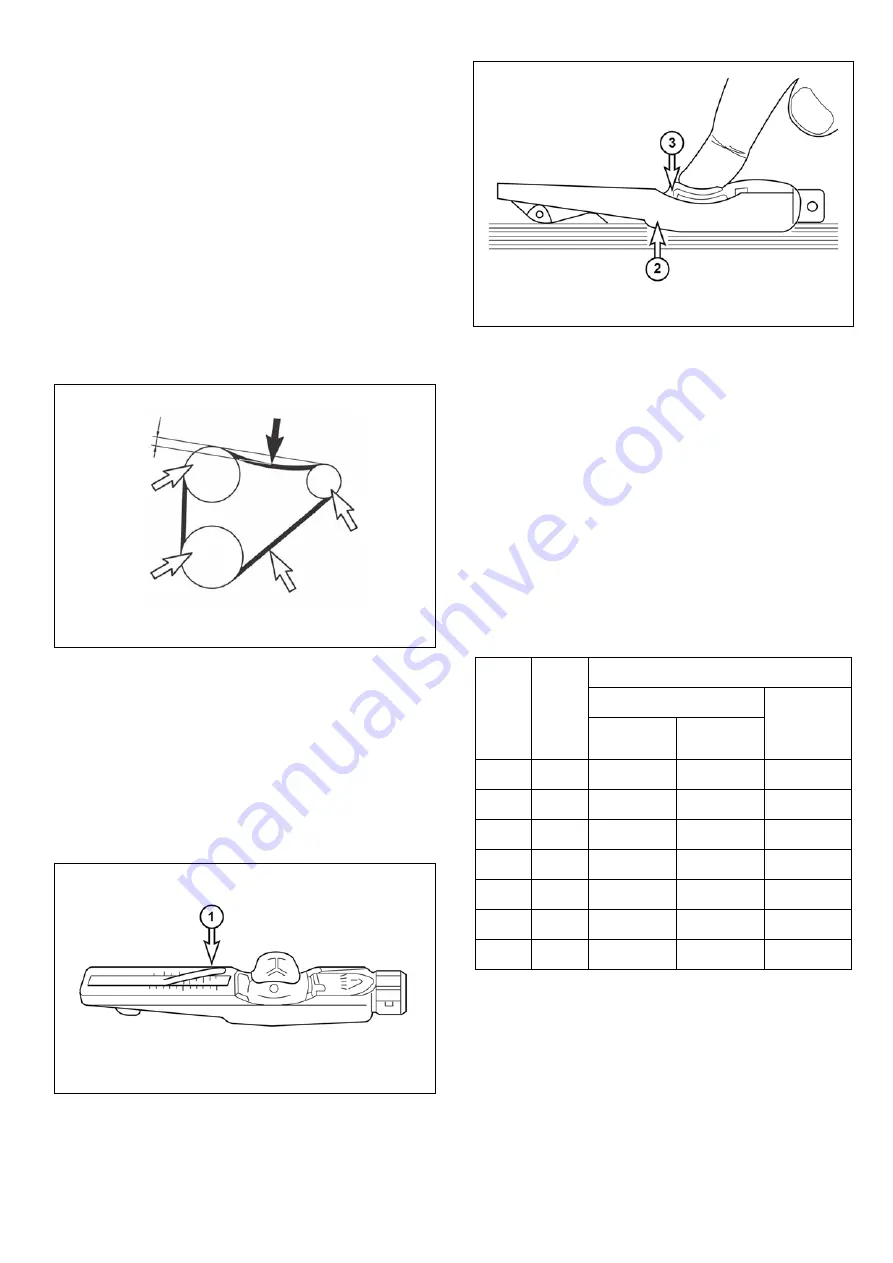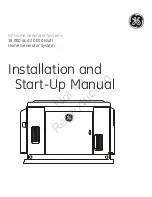
G80XW/XF, G115XW/XF, G150XW/XF, G200XW/XF - 50HZ
OPERATION & MAINTENANCE MANUAL
93
G100XW/XF, G135 XW/XF, G170XW/XF, G225XW/XF - 60Hz
OTHERS/DRIVING SYSTEM
V-BELT
The tension of the V-belts should be checked daily.
1. Change the V-belts if necessary.
a) If wear or differing tensions are found in a multiple
V-belt drive, always replace the complete set of
V-belts.
2. Checking condition.
a) Check V-belts for cracks, oil, overheating and
wear.
3. Testing by hand.
a) Test the V-belt tension by pressing the V-belt in the
centre between pulleys. 10~15mm deflection is
normal.
b) To check the V-belt tension more accurately, use a
V-belt tension gauge.
4. Tension measurement.
a) Lower indicator arm (1) into the scale.
b) Apply tester to belt at a point midway between two
pulleys so that edge of contact surface (2) is flush
with the V-belt.
c) Slowly depress pad (3) until the spring can be
heard to disengage. This will cause the indicator
(1) to move upwards.
NOTE:
If pressure is maintained after the spring has
disengaged a false reading will be obtained.
d) Read the tension value at the point that the top
surface of indicator arm(1) intersects with the
scale.
e) Before taking readings, ensure that the indicator
arm remains in its position.
NOTE:
If the value measured deviates from the setting
value specified, the V-belt tension must be
corrected according to the following table.
10-15mm
Water pump
pulley
Crank pulley
Press here
Alternator
pulley
V-belt
EA9O2006
DV2213048A
Type
Belt
width
(mm)
Tension from a Tension Meter
New belt (kg)
Replacement
required
Upon
installation
After 10
minutes
M
8.5
50
45
40
A
11.8
55
50
45
B
15.5
75
70
60
C
20.2
75
70
60
3V-2
18.8
90~100
70~80
60
3V-4
39.4
180~200
140~160
120
3V-6
60.0
270~300
210~240
180
DV2213049A
















































